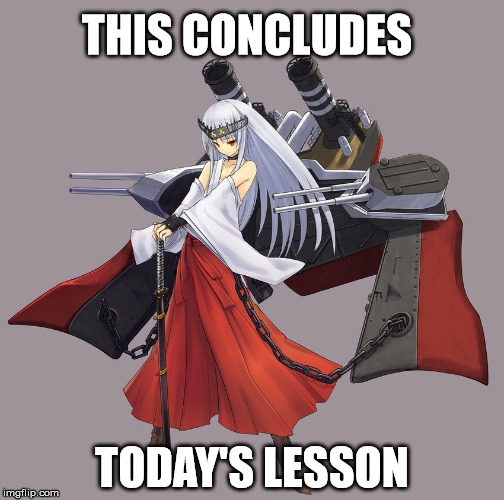.png)
.png)
Two events marked March of 1909: firstly, the further development of the oil-fired boiler design via the introduction of economisers and, seondly, the development of the first functional 14'' inch guns by the USA. The Japanese Admiralty were concerned by this, as their own gun foundries could only manufacture guns of up to 11 inches; however, intelligence reports indicated that the American 14'' rifles had atrocious gun handling and accuracy. There were proposals to approach the Americans in the interest of acquiring the licence for further experimentation, but they came to nothing, given the Navy's limited budget.
.png)
By April, the lessons gleaned from the
Matsukazes' shakedown cruises were implemented in the design of a new, experimental 900-ton destroyer class: the
Nokaze. These were ships that could reach an even higher top speed, of 33 knots. Only two ships were put into production for now: the
Nokaze and the
Hakaze.
In addition, the Admiralty ordered a revolutionary oil-fired light cruiser class, the
Itsukushima.
.png)
These were ships meant not for raiding but for service in the waters of South-East Asia. They were heavily armed, with a 6-gun broadside of the superb Japanese 6-inchers and four underwater torpedo tubes; more significantly, they were designed to reach a
staggering flank speed of
29 knots. Japan wanted to make sure she would not lose any of these ships to enemy battlecruisers and so she gave them speed to rival a destroyer. Their belt armour was also surprisingly tough for a light cruiser, at 2.5 inches, capable of defeating small-caliber guns.
All-in-all, the
Itsukushimas would have made
every other light cruiser in the world obsolete, overnight; especially the 'destroyer-killing' French designs. However, due to lack of funds, the laying down of the first ships of the class was delayed for several months.
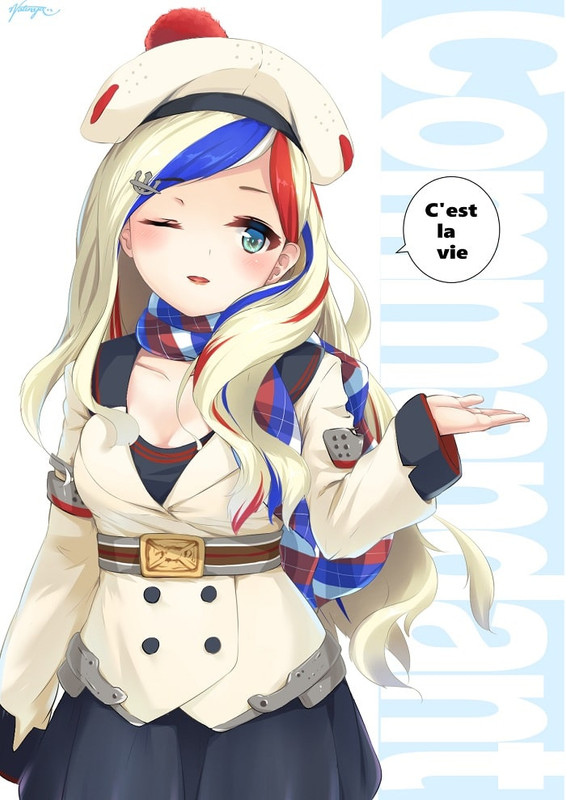
.png)
Finally, it was the US who approached the Japanese, expressing their interest for IJN torpedo technology. The Admiralty graciously allowed the licencing of preheater designs to the US Navy, in exchange for a much-needed influx of cash for their budget.
.png)
.png)
New developments in armour and hull constructions came at the right time, before the laying down of the first
Itsukushimas: the new technologies were implemented into their design, offering a moderate amount of weight savings.
.png)
And in August the docks in Kure and Yokosuka were expanded even further, for the inevitable time when Japan could afford a bigger and badder capital ship.
.png)
Thankfully, the steel industry lobbies proved themselves a valuable asset to the Navy in this period. Interestingly, for the first time, American industrialists expressed interest in establishing overseas foundries in Japan and Formosa. Under political pressure to improve the market, the Government released an extra yearly six million for the Navy budget.
.png)
However, the naval secretary stipulated that these funds were
not for the Navy to play around with. The government was 'all too aware' of the role the submarines had played in the Franco-Japanese war, and they were expecting no less than 11 new submarines to be laid down immediately.
.png)
Especially since new diesel engines, fuelled by the Sumatran oil fields, would make submarines more effective than ever.
.png)
In December, the Italians arrived with a rather expensive gift: the design for a high-quality 4'' rifle, perfectly suited for use in the IJN destroyer fleet. The Navy jumped at the opportunity -
.png)
- and immediately laid down the 11 submarines the naval secretary was so eager for.
.png)
As a gesture of good will, Japan agreed to assist the Italians with a rebellion in their colony of Eritrea. Fuso and Izumi were dispatched with an Army complement; the rebellion, which had bogged down Italian troops for three months was dealt with in two weeks.
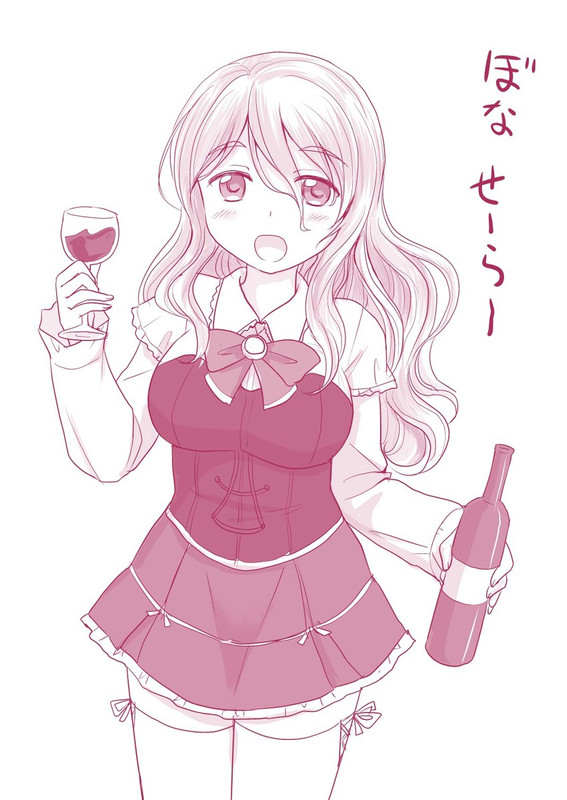
OK, NOW YOU'RE PUSHING YOUR LUCK, SPAGHETTIS.
So, as Japan entered this new decade, her Navy list included the following:
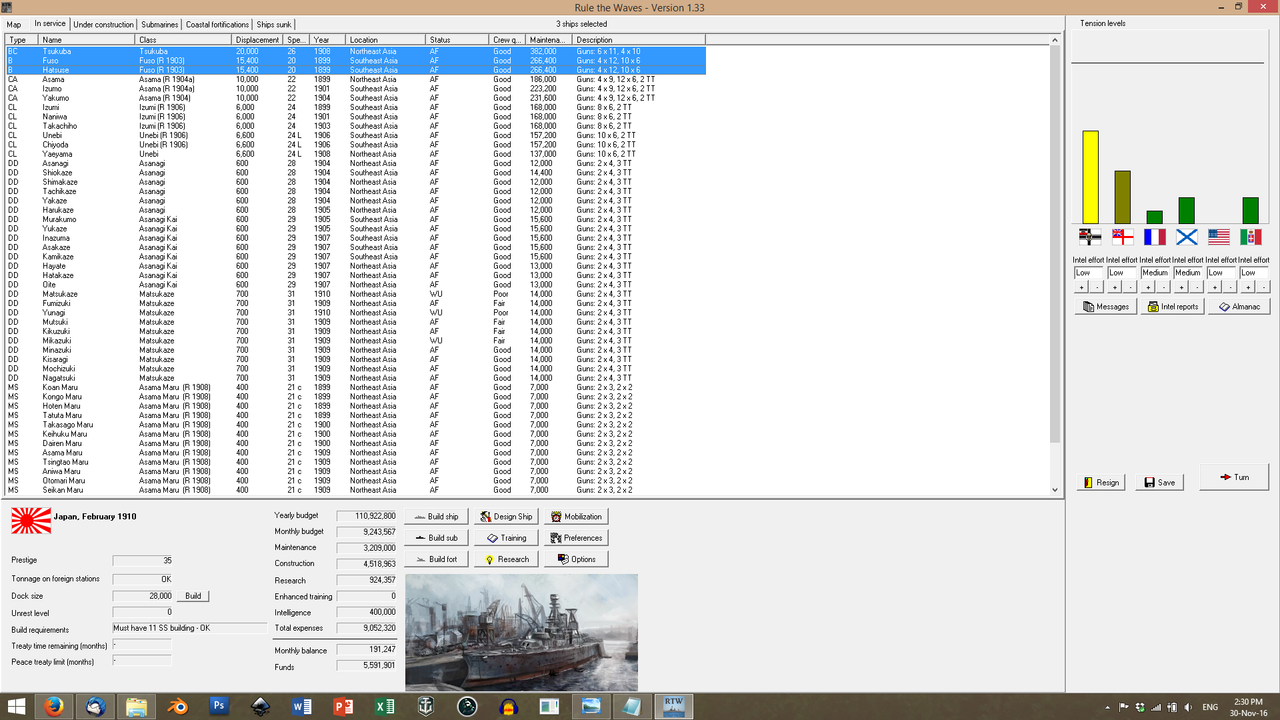
A Battle-line comprised of the two obsolescent
Fusos and the modern battlecruiser
Tsukuba, with
Ikoma less than a year away from completion.
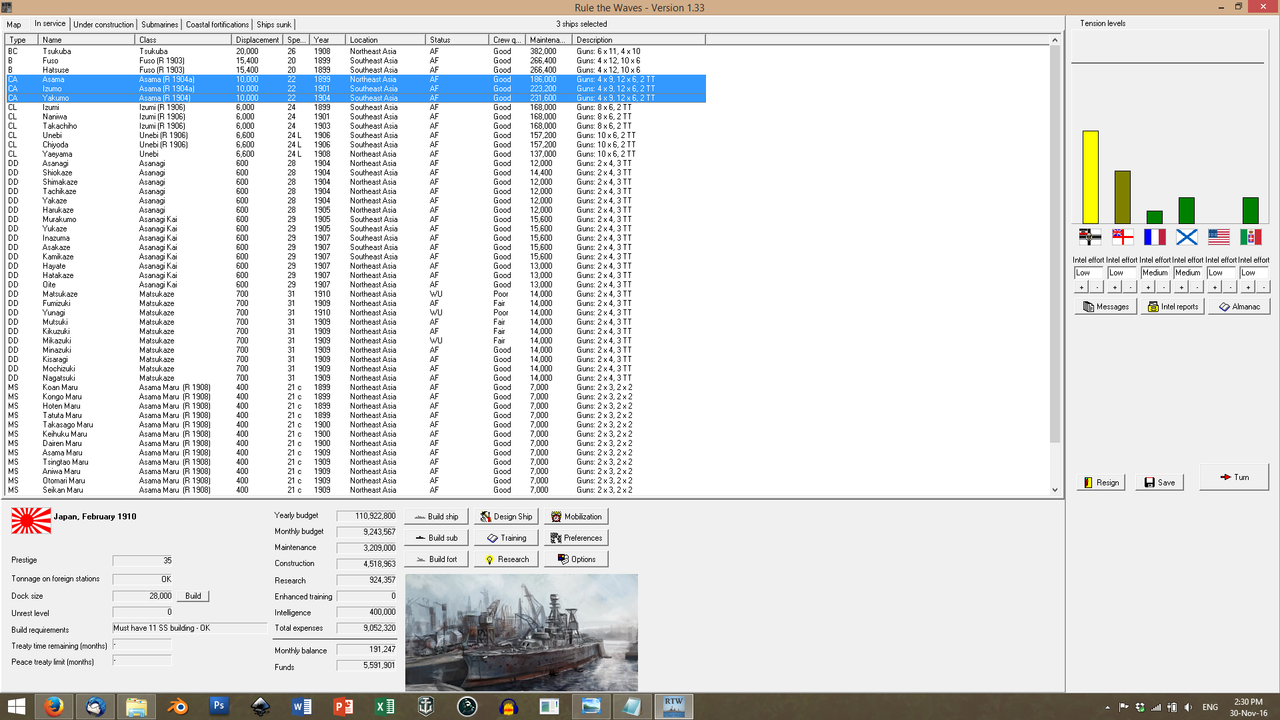
Three old
Asama-class heavy cruisers, still very much competitive if slow ships.
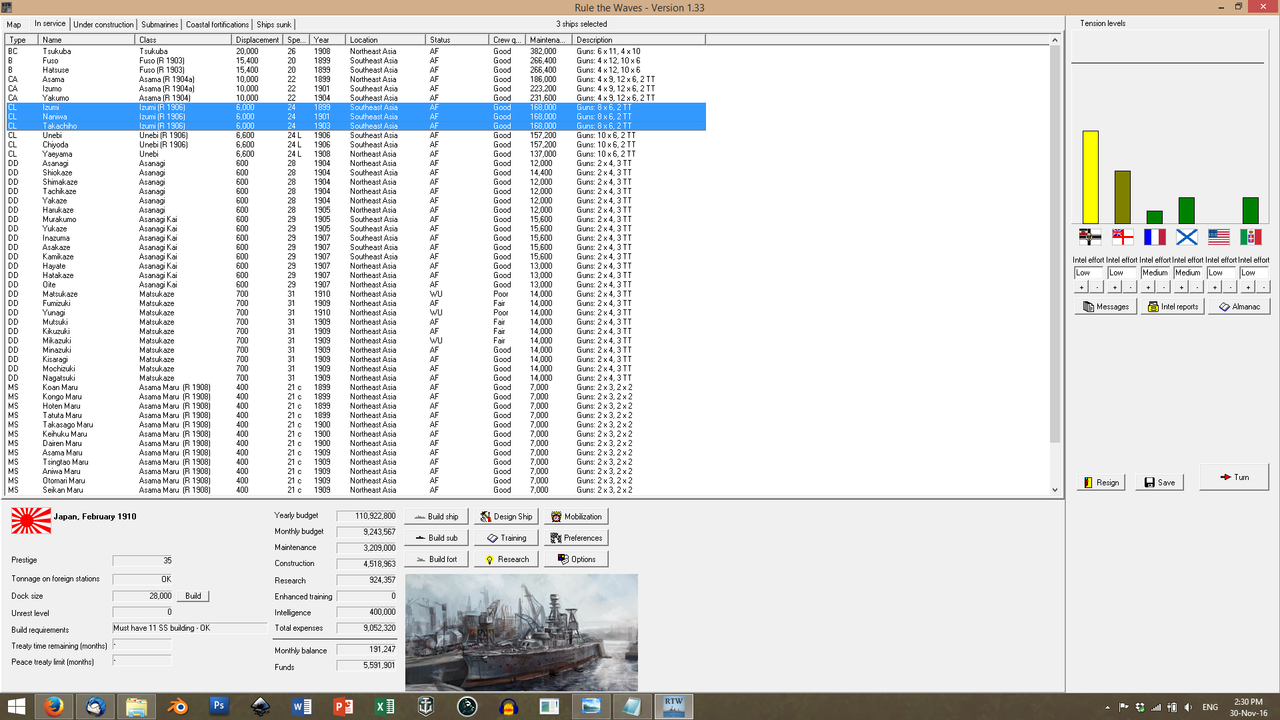
The three
Izumis, heavily refitted and modernised, although still coal-fired.
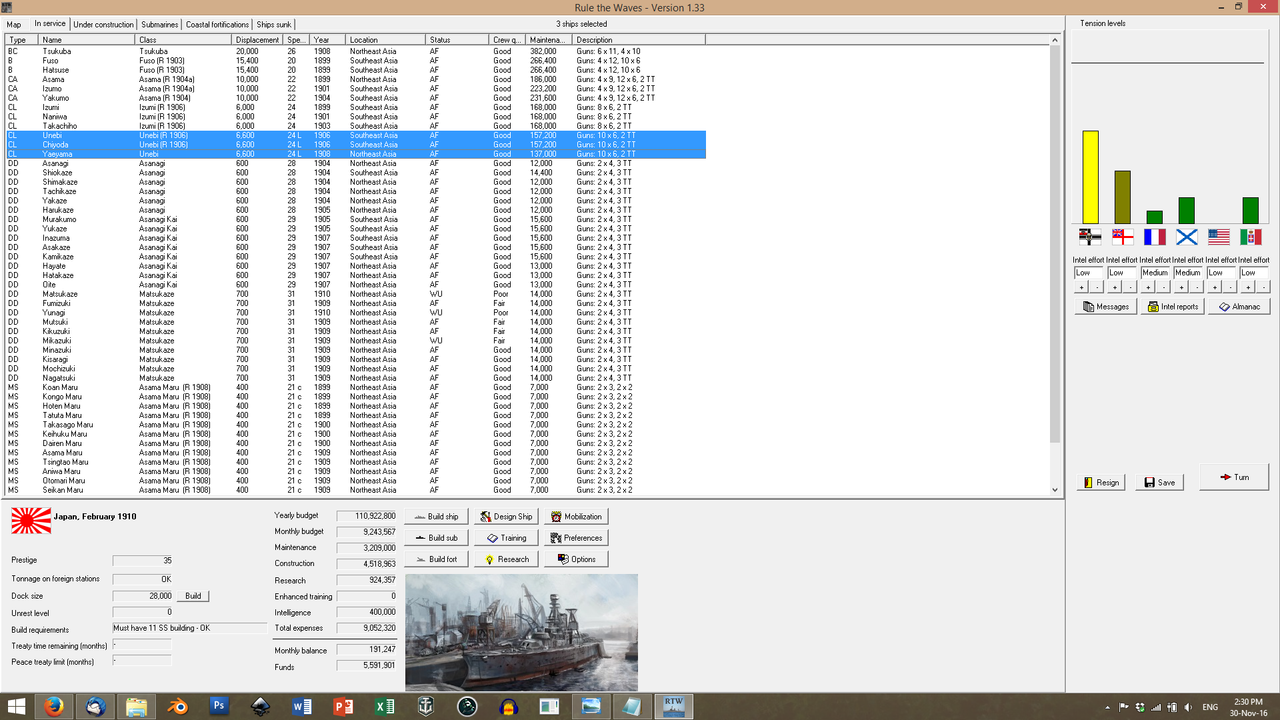
Three
Unebis, rigged for long-range raider duty.
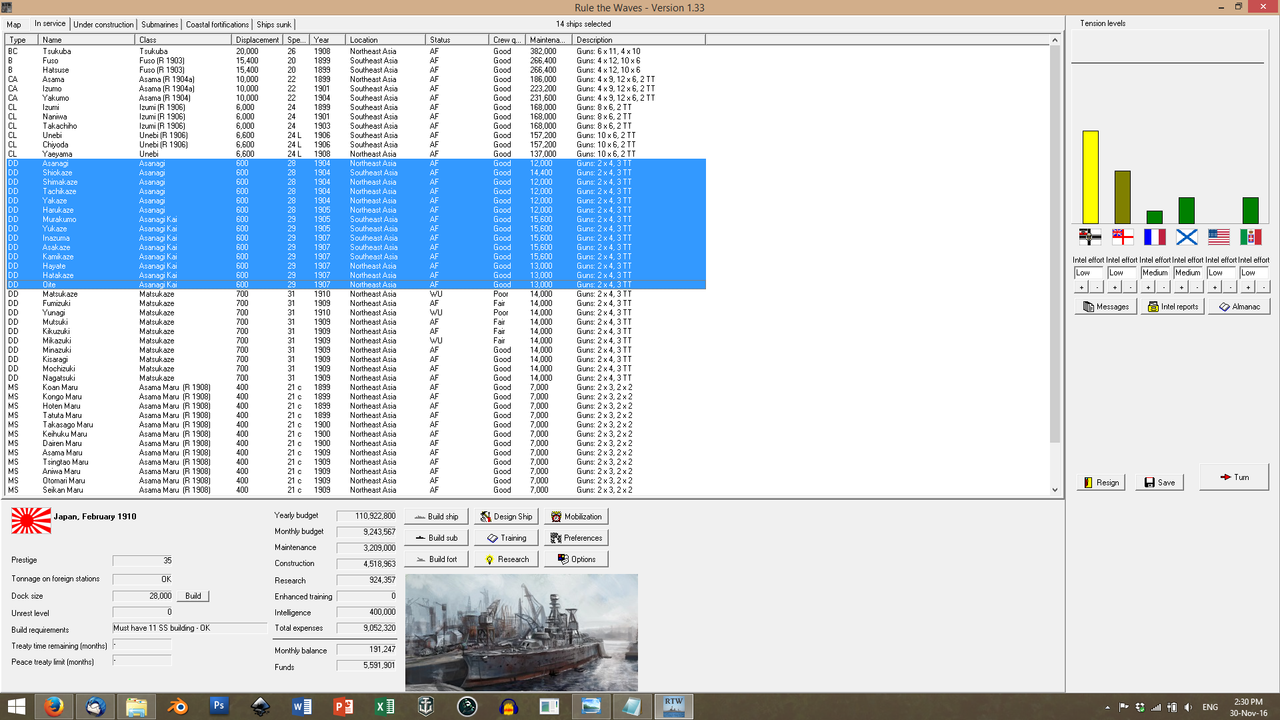
14 second-rate
Asanagi and
Asanagi-Kai destroyers, best suited for convoy and escort duties.
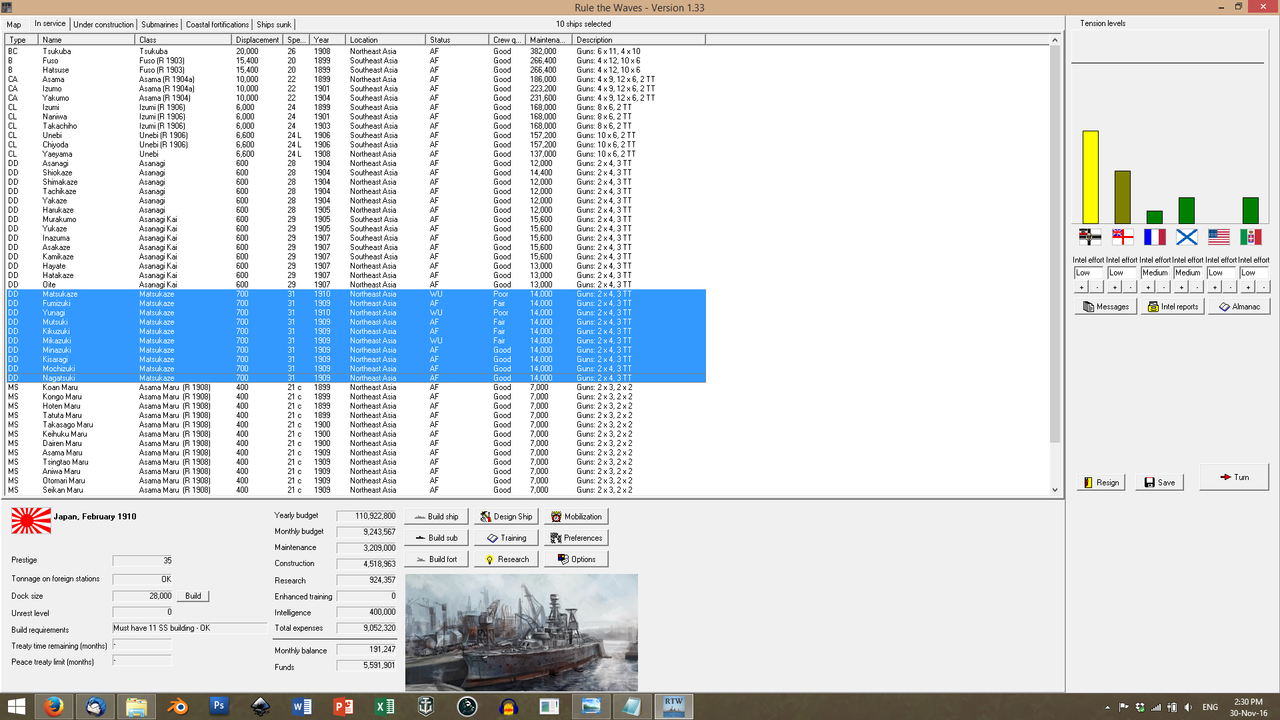
10 first-rate
Matsukazes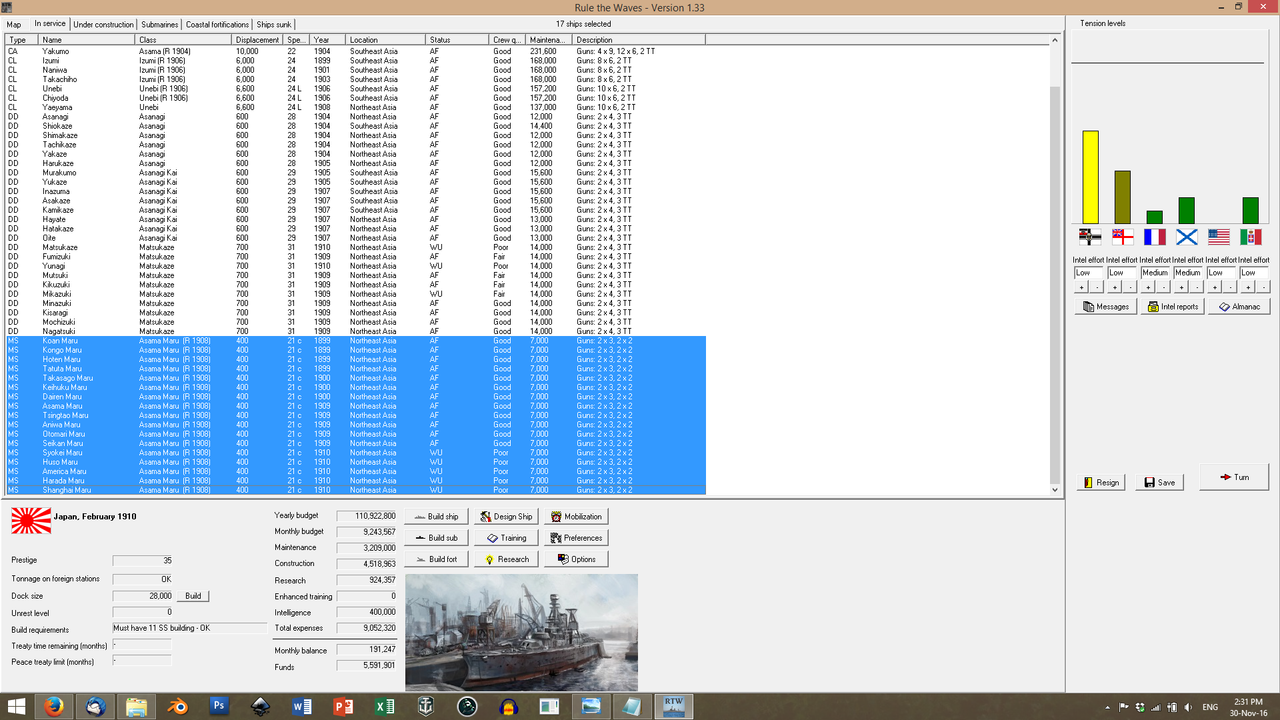
And a healthy 17 Minesweepers for the 'Maru boys'.
She also had 11 subs in active service, with another 11 improved models being constructed.
.png)
The new decade started well for the Japanese, with an industrial boom like none seen before. It's not by chance that the American-Japanese foundries began their work in February; but new native plants were also set up in Sumatra, Nagasaki and Sasebo.
.png)
In April, the R & D team kicked down the door to the Admiralty with a spectacular new development: they felt they had cracked the problems of stability and weight distribution that prevented
four centreline turrets to be mounted on a ship. They were still unwilling to risk a 'B' superfiring turret, but the Admiralty agreed that this could revolutionise Japanese ship design. More importantly, the scientists were confident that they were world leaders in this regard - Japan was opening her technology lead once more.
.png)
In May, with
Ikoma less than 6 months from completion, the Navy finally felt confident in setting aside funds for the construction of the
Itsukushimas The two ships were laid down in Sasebo and Tsingtaou.
.png)
This caused a major 'Navy Craze' in Japan. There were
new things happening in the scene and national pride throughout the Alliance rose again. The Government was quick to capitalise on this by promoting the 'very succesful' Submarine program they had begun, eager to earn political capital with the population in the light of the first instituted elections, to be held in August.
.png)
The Prime Minister also suggested a repeat of the 1904 shooting competition, to drum up further support. The Navy enthusiastically agreed, eager to increase its prestige with the population.
This time, the competition was a truly grand affair, lasting throughout the entire month. The fleet toured the Alliance, with specific shooting tasks assigned for each region, and with the local population gathering around on the docks and in small ships to watch. There were festivals and open-air massive kitchens for the atendees; bands playing; flags and flowers decorating entire towns. A minute-by-minute recounting of the events was telegraphed throughout the Alliance, with crowds clustering around the telegraph offices and betting on the local favourites. There are no official data, obviously, but bookies would claim that more than six million (the equivalent of three month's worth of the
Ikoma's construction costs, to put the figure into perspective) changed hands during the competition.
The competition, once more, came down to the wire. Little
Yaeyama gave a very good showing, coming in third, only just overtaking veteran
Izumi and starting a night-long celebration in the Marianas and the Bismarck Archipelago in honour of her crew.
Tsukuba, the
Pride of the Fleet came in second.
And
Fuso, the old 'Lady of China', the 'Lucky Ship', a ship well into her twilight years, smashed her previous record with a jaw-dropping bullseye at
21,340 metres off the coast of Formosa, which crowned her the undisputed winner of the competition and drove the crowds into hysterics.
.png)
